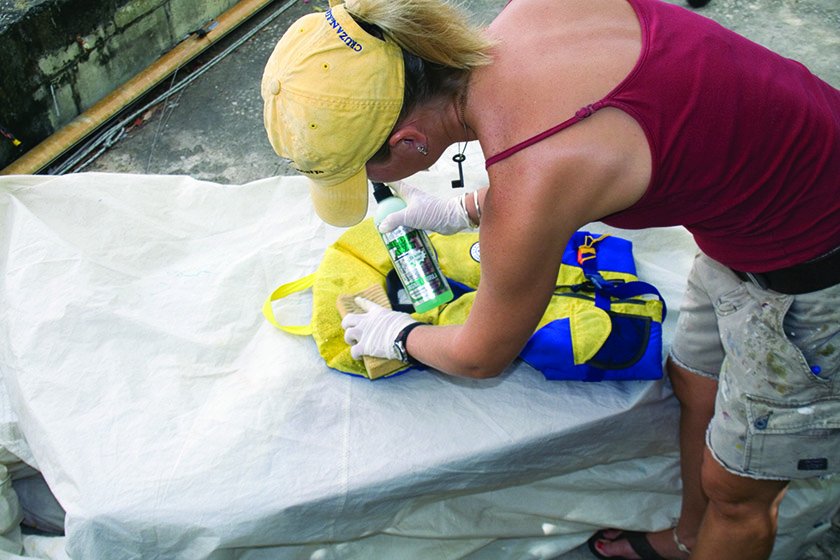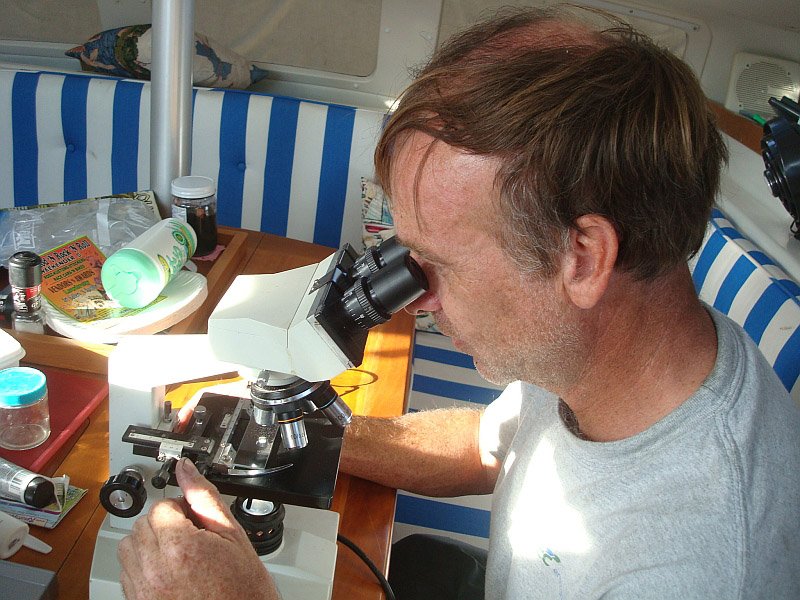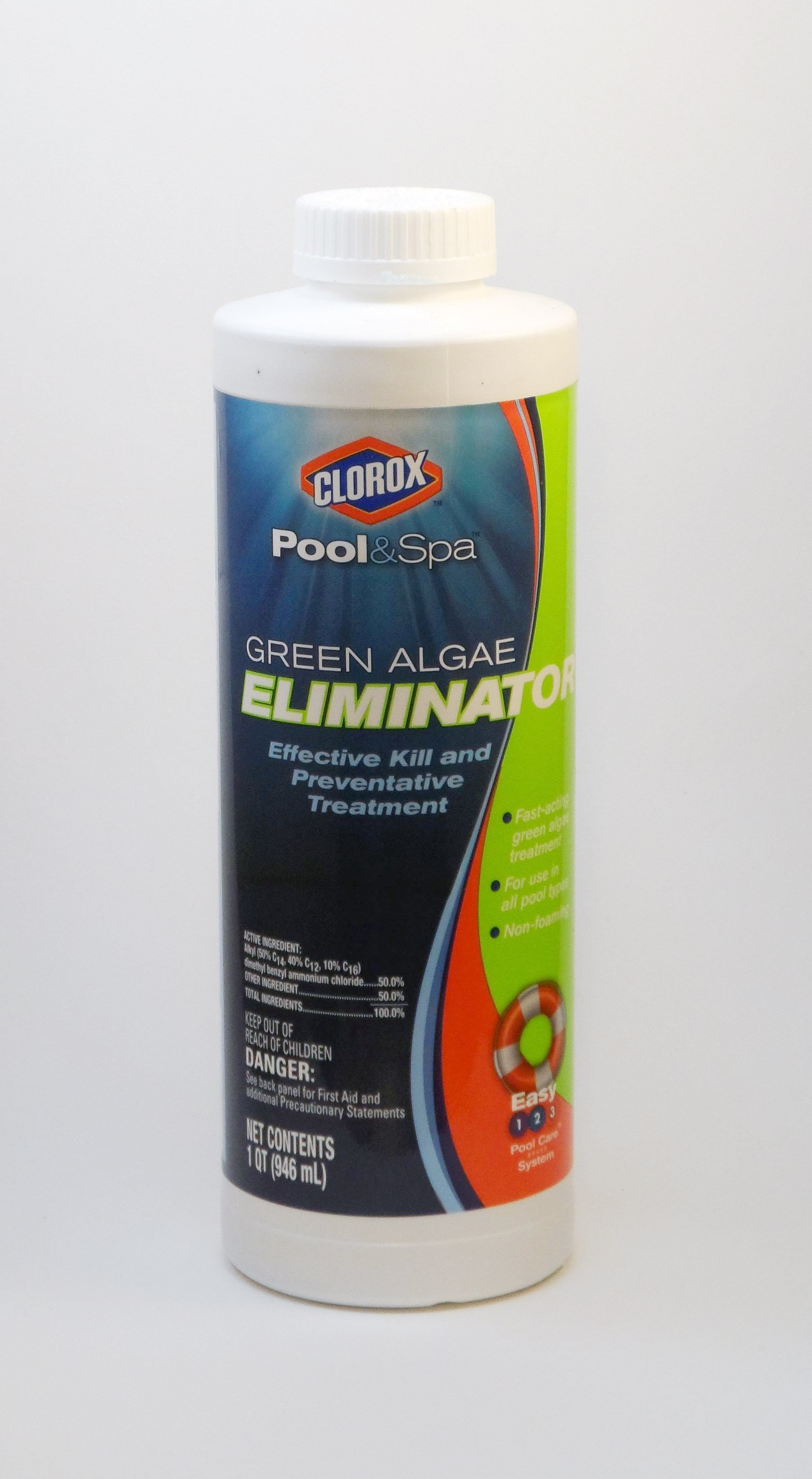
It’s been an exceptionally wet winter in South Florida this year, so we’re getting no respite in our ongoing battle with mildew. At least we can air out our boats in between weather systems. Sailors in northern latitudes have their boats sealed up for winter, and this can bring condensation, creating a moist environment that allows mildew to thrive. Fortunately, there are some simple measures we can take to prevent mildew from ambushing our unattended boats.
We tested the most effective cleaners for mildewed fabrics in 2009 and published a follow-up on long-term treatments in 2015. In the 2015 test, we were delighted to discover that some DIY formulas and common pool treatments like Clorox Algae Eliminator can do as well as pricey store bought miracle-cures. We also concluded that controlling ventilation and humidity (often with the help of dehumidifiers, which we also tested) plays vital role in preventing mildew. Finally, for those in search of long-term protection against mold and mildew we learned that an effective water repellant coating is one of the best preventatives.
Canvas dodgers and biminis are the hallmark of a cruising yacht, keeping the sun at bay and allowing the crew to dodge the worst of the weather. Canvas also protects sails, windows, and machinery. The cost of these fabric covers adds up quickly, so and we wanted to find the best way to protect the investment and extend lifespan of the fabric.
Glen Raven, the manufacturer of Sunbrella, recommends that routine maintenance include frequent freshwater rinsing plus spot cleaning the fabric. After a more thorough cleaning, Sunbrella advises owners to apply a treatment (specifically Gold Eagle 303 High Tech Fabric Guard) to restore the fabrics repellency. In our February 2014 report on canvas maintenance, we took a look at 303 High Tech Fabric Guard and other treatments designed to keep on-board canvas water repellent and looking its best.

Waterproofing canvas is based on making the surface hydrophobic enough that water cannot wet the surface. Most marine canvas is protected by some pretty effective treatments at the factory, but after two to three years in the sun, these treatements tend to wear off. Any protective coatings containing waxes, PTFE (Teflon), and silicone can help renew the repellency, but usually the protection lasts for about 30 days.
When we refer to canvas here, we mean acrylic marine fabrics like Sunbrella, not cotton duck, which some traditionalists still use. The chemistry of cotton and acrylic are quite different-cotton accepts treatments more readily, but acrylic is more naturally repellent. We’ve previously tested water repellents for cotton duck (PS,June 2004).

For maximum water repellency, boat owners could use impervious waterproof fabric instead of canvas, but that typically isn’t a good idea. Waterproof sail covers hold moisture, mildewing sails more quickly. Waterproof dodgers sweat and hold condensation, drying slowly and mildewing. Waterproof machinery covers would trap salt and humidity, accelerating corrosion. For most on-deck equipment-protection tasks, water-repellent, breathable, durable acrylic fabrics are best. These include Top Gun, Weathermax, and Sunbrella, which we tested and reported on in the December 2011 and November 2012 issues.
As for anti-mildew treatments, we found that 303 High Tech Fabric Guard-made by the same company that brings us STA-BIL fuel treatments, a dependable performer in our fuel treatment tests-is doing very well in both panel and on-boat testing. Generally, 303 High Tech Fabric Guard is considered to be the gold standard for Sunbrella waterproofing treatment, and we agree.
If cleaning mildewed sails is among your biggest cleaning chores, check out my previous blog post Dealing with Dirty Sails. And if you’re tired of living in a boat that smells like a damp locker room, our ebook series The Mildew Free Boat is just the ticket.








































For several years I treated both sides of my sprayhood with 303 Hight Tech Fabric Guard. I had a big problem with mildew on the underneath side of the Sunbrella. When I switched to only treating the outside, the mildew problem was greatly reduced.